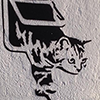Search the Community
Showing results for 'Catalina'.
-
Hi @EricP, Thanks for the crash report. While this isn't something I've been able to replicate on our Mac running Catalina here in the office, I can see that we have had a crash in this area of the app logged with the Developers before and when I compare your crash report, with that one, they are the same. I'll get the report updated and also attach your crash report. Hopefully, that will be enough for the Developers to be able to fix this
-
Fair enough. But this particular bug aside, Designer simply never was supposed to have all these advanced pixel manipulation tools like Photo. If you also have Photo v1 (which suffers from the same "clone in place" bug), then simply: File → Edit In Photo in the Layers panel select all "Pixel" type of layers you want to merge Layer → Merge Selected File → Edit In Designer to get back where you came from I hear you! I switched from El Capitan as the primary OS to Ventura only three months ago, having had a small Catalina partition only for testing purposes on my old Mac.
-
As described above: ^ emphasis and inserts mine. This works in ADe2 – but not in ADe1 where cmd-drag will cut-and-move on the same layer, not copy. Your MBP definitely supports Catalina or higher, so get a fast and large SSD, format it as APFS, install the highest MacOS your MBP supports, then create a separate volume on the fly to clone back your old Mojave volume as is. Mojave already supports APFS which is a Good Thing™ in your scenario. Then you can test v2 on a separate bootable partition as much as you like. Been there done that with my old MBP 2012 which can boot anything from Mountain Lion to Catalina (unfortunately Mojave and Catalina partitions being inaccessible from Sierra or earlier). Also, I still have ADe and APh 1.8.4 from the App Store on my Mountain Lion partition!
-
I am having a similar problem. One error is sometimes not being able to Save, Save As or Export. Job files are on an internal 4TB HDD drive in my 2009 Mac Pro tower (macOS Catalina). The job folder is 4 levels deep in the hierarchy. One temporary solution was to move the Affinity file to the Desktop where I was able to Save and Export. Next temporary solution was to remove a comma from the nested folder name. Seemed to work for awhile but then the issue recurred. The second error is with switching between Designer and Photo. After switching from Designer to Photo and doing some image edits, I tried to switch the file back to Designer. I got this error: Failed to launch Affinity Designer 2 The application was not available. An recoverable error occurred while trying to restore the document. The document will now close. Happily, after quitting both Designer and Photo, I was able to open the .afdesign file in Photo, but not in Designer. Trying to open the file in Designer gave me this: Failed to open file The file is already open in Affinity Photo 2 on this device. So I had no choice but to open in Photo, whereupon it prompted me to open a recovery file. I didn't lose any work, but it is really annoying to be getting these errors. Never had anything like it with Affinity 1.
-
Macbook Pro 2015 Monterey AND Mac Mini 2012 Catalina. Having worked previously, today there is no toolbar and no Mac controls after loading the programme. I have a copy, same version which has been running on another Mac Mini 2012 Catalina, which is fine, but I am reluctant to reload it in case I have the same problem. I have tried deleting the app and re-downloading it on the other machines, but without improvement.
-
if you are using a VM on Linux to get the Affinity products to work well on Linux then the following discussion might be of interest: https://forum.endeavouros.com/t/affinity-designer/14494 It is technically possible to have a Unix-only way of get the Affinity products to work well on Linux...but only using a macOS VM with macOS Catalina 10.15 or later: https://www.makeuseof.com/macos-ubuntu-linux-virtual-machine/
-
FWIW, it is there on my Mac running Catalina (macOS 10.15.7) in both the Designer & Pixel Personas of AD. If it is not in Sonoma then that is probably a bug of some sort related to that newest macOS version. EDIT: I just checked again & like everybody else is reporting now I have File > Document Setup only in the Designer Persona. I'm not sure what I thought I was seeing when I wrote the above. Sorry for any confusion I might have caused.
-
Probably of little or no relevance here but on Preview version 11 on my iMac running Catalina, the only place I see profiles mentioned is in the View menu in a submenu named Soft Proof with Profile. It doesn't matter which one I choose; when I close the file there is no Revert option, nor any indication that the file has been altered in any way. It just closes.
-
Thanks for letting me know - a colleague of mine has tried this on Catalina using the Terminal command and this has produced a log file in v2.2, so I'm unsure why this isn't working for you at this time. Are you using the Affinity Store or Mac App Store version of the app? Is this the same for V1, where the log is being generated? FWIW, I have tried the command on my Sonoma mac and it generated a log as expected when exporting a simple file with a rectangle to PDF in both V1 & V2 from the Affinity Store. I can't explain that behaviour, perhaps as there is a profile installed (in use?) on your Mac with the same name, the Affinity app would perhaps embed that 'iMac' profile. All of the above testing I've performed with R C-Rs specific file has been on Windows, where there is of course no such profile.
-
I have no issue exported your Cracked heart.afdesign file with it's iMac profile... For me the file appears as soon as the Export Command is invoked in Affinity apps, i.e., prior to exporting the file which of course makes sense... I've attached the PDFLib.log file generated from your Designer file, though I'm not on Catalina so maybe there is an issue there... PDFLib.log
-
Weird. I have checked & double-checked the commands, & made absolutely sure I replaced "yourusername" with my user account's short name, but I still do not get a PDFLib.log file created on my desktop or anywhere else. Can someone on the team check & see if this works with Macs running Catalina? Yes, I discovered that & updated my post at about the same time you were writing your reply. But it still makes a good test case for producing an error, so I do not know why I can't generate a log file on my Mac.
-
It's also listed in my sig below every post as macOS 10.15.7. As for the rest of it, from the Catalina macOS User guide accessible by clicking the ? button in System Preferences > Security & Privacy > Privacy tab there is this for Files and Folders: It appears that this guide is no longer online & it can't be copied as text in the version that opens by using the ? button, which is why I copied it as a jpeg, but the point is there is no way to deselect an app on that list because no app listed can be selected, as well as no way to add any app to it like can be done with Full Disk Access. There are also other longstanding issues with it like trying to untick an item like Desktop Folder often either does nothing or unticks or ticks a folder option in another listed app. A web search will turn up several topics about this issue for Catalina & I think for other versions but I never have tried that.
-
Maybe, you can give it a try if it makes any difference or not. FWIW, on my Mac running Catalina, in System Preferences > Security & Privacy, once I click the Lock icon & authenticate with my admin user name & password, I can add apps to Full Disk Access by clicking on the plus button, but for reasons I have never understood I can't do that for Files and Folders because the plus & minus buttons are always greyed out. A web search for that apparent bug turns up several references to it not working but nothing about how to fix it.
-
Mine is much older, probably because I'm running Catalina, but it also is 12KB on disk (11,504 bytes used). Double-clicking on it should open it in ColorSync Utility & the 'desc' tag should show its Localized description strings. It would be interesting to know if it shows anything other than Web Safe Colors for @P.V, & also if ColorSync's Profile First Aid Verify shows any problems with it. maybe also use the Profiles tab in ColorSync Utility with it set to Group by Location to see what it shows for User profiles & so on.
-
Although possible, we haven't seen any similar reports from other Affinity/Sonoma users, and I'm not seeing the same behaviour here. Might it be related to old Type1 (Postscript) fonts? Since Catalina, Apple doesn't support them anymore. https://appleinsider.com/articles/23/09/27/sonoma-puts-the-last-nail-in-the-coffin-for-postscript-on-macos
-
I've never used the Migration Assistant or Time Machine to copy my data to a different Mac, for a reason. It smells trouble – unless you've been using only Apple apps, that is. That said, while migrating from old MacBook running El Capitan to new MBA with Ventura, I was too lazy to set up Affinity v1 anew and I simply copied all its Library App Support/Container folders to the new Mac. Troubles. Eventually I fixed it by trashing some *.plist or *.dat files, don't remember which ones. A possible cause might have been that the apps got confused by reading Intel based preferences on an Apple Silicon Mac. For Affinity v2, I copied some preferences from my old Catalina partition which mostly worked OK, as far as I remember. In general though, on a new Mac it's usually the best to start setting up all 3rd party apps from the scratch, even though it can take a few days or – in my case – even weeks. It also clears all the junk that one hasn't been even using in years. Been there done that many times in the past 30 years…
-

AD2.2.0 Time zone issue?
R C-R replied to Sid J's topic in Affinity on Desktop Questions (macOS and Windows)
Not on my Mac running Catalina. For me it shows CDT. -
AFAI know Aperture was 32-bit and so didn't run initially any more under Catalina. Apple instead to porting it over to 64-bit sadly discontinued it (and iPhoto) in favor of Photos, as these Apple apps (Aperture & iPhoto) weren't able to keep up with fast growing Lightroom presense and dev speed. - However, those who still have an Aperture copy can try out ... Retroactive ... in order to still make out some use of Aperture under more modern 64-bit macOS versions. Other than that, there's a sort of Aperture successor for MacOS, called ... RAW Power ... developed from the former main Apple Aperture developer. So one can assume that it might resemble Aperture very well.








